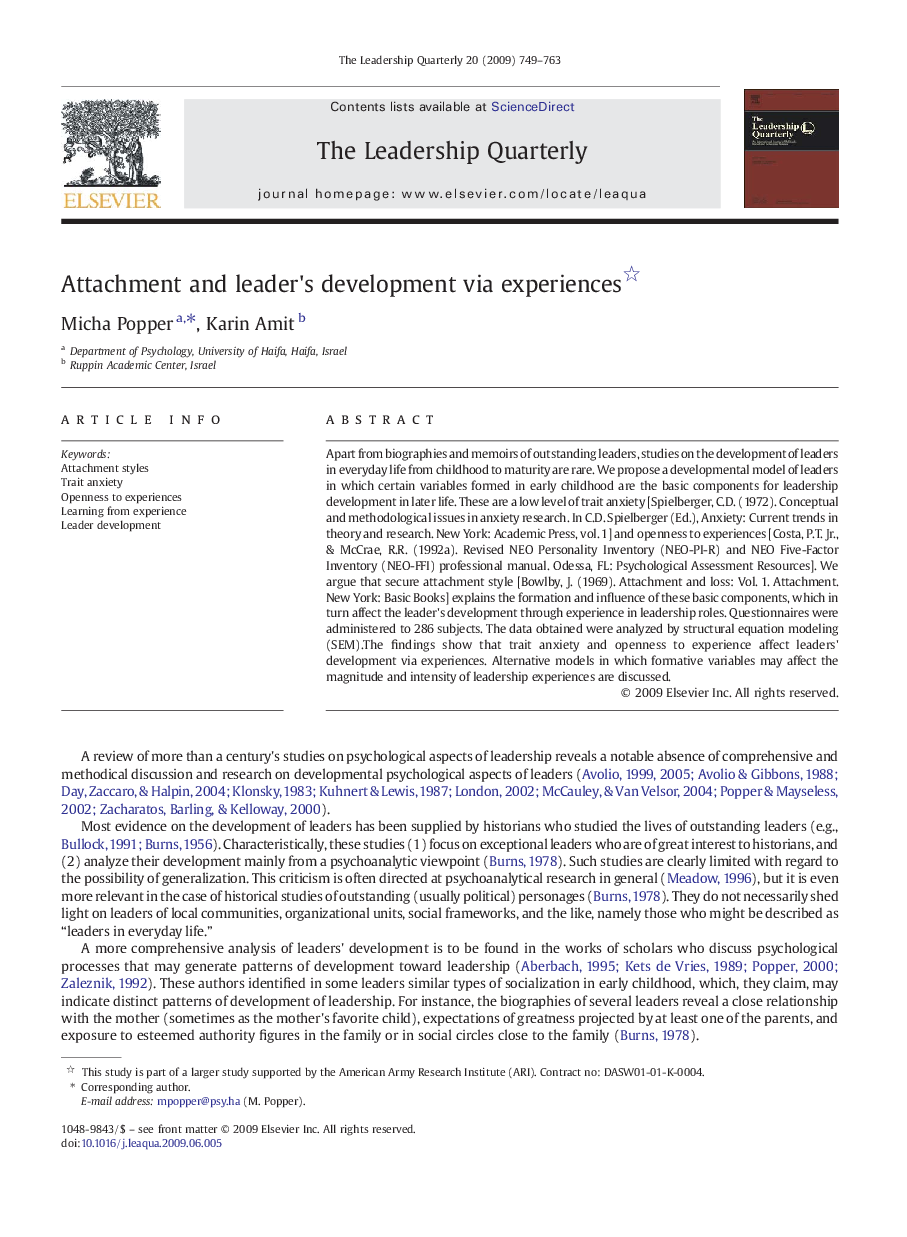| Article ID | Journal | Published Year | Pages | File Type |
|---|---|---|---|---|
| 888175 | The Leadership Quarterly | 2009 | 15 Pages |
Apart from biographies and memoirs of outstanding leaders, studies on the development of leaders in everyday life from childhood to maturity are rare. We propose a developmental model of leaders in which certain variables formed in early childhood are the basic components for leadership development in later life. These are a low level of trait anxiety [Spielberger, C.D. (1972). Conceptual and methodological issues in anxiety research. In C.D. Spielberger (Ed.), Anxiety: Current trends in theory and research. New York: Academic Press, vol. 1] and openness to experiences [Costa, P.T. Jr., & McCrae, R.R. (1992a). Revised NEO Personality Inventory (NEO-PI-R) and NEO Five-Factor Inventory (NEO-FFI) professional manual. Odessa, FL: Psychological Assessment Resources]. We argue that secure attachment style [Bowlby, J. (1969). Attachment and loss: Vol. 1. Attachment. New York: Basic Books] explains the formation and influence of these basic components, which in turn affect the leader's development through experience in leadership roles. Questionnaires were administered to 286 subjects. The data obtained were analyzed by structural equation modeling (SEM).The findings show that trait anxiety and openness to experience affect leaders' development via experiences. Alternative models in which formative variables may affect the magnitude and intensity of leadership experiences are discussed.
